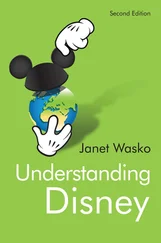It might be asked: If asexual reproduction was the way it all began, why is sex even here? This is an especially pertinent question, given that sex is a complex and costly way of reproducing one’s genes. For example, there is considerable time and risk involved when it comes to finding a mate. Moreover, only 50 percent of an organism’s (unique) genes are replicated in traditional sexual reproduction, versus 100 percent in asexual reproduction.
Although it is still debated, the most widely cited explanation for sexual reproduction concerns the creation of genetic variability, or the shuffling of the genes, which allows a species to survive in new and changing environments. This shuffling of genes may be particularly relevant for keeping ahead of various parasites that can take advantage of a gene pool lacking in diversity (Bell, 1982; Ridley, 1995; Van Valen, 1973). This explanation for the origin of sex is sometimes called the “Red Queen hypothesis,” after the character in Lewis Carroll’s Through the Looking Glass who exclaims, “It takes all the running you can do, to keep in the same place” (Carroll & Tenniel, 1960, p. 345). In other words, sex may have evolved as a weapon to win—but just barely so—the arms race against new environmental threats, including parasites.
This shuffling of genes may also be characterized as a type of “bet-hedging” strategy, allowing sexual reproducers to keep one step ahead of unknown threats in constantly new and changing environments. It is as if sexual reproducers are evolutionary dart players, throwing a variety of genetic arrows at the game board of life and seeing if one or more sticks.
The Red Queen hypothesis begs the question: If the shuffling of genes is often good for the health and vigor of organisms, why aren’t there more than just two sexes? Surely a mating among more than two sexes would shuffle the genes even better than a mating between just two sexes. For example, why don’t we see tri -sexual species—exotic characters belonging, seemingly, in a sci-fi movie—all over Earth? Well, actually, there are a number of species on Earth with three or more sexes (Roughgarden, 2004), but such examples are rare in Earth’s natural history. Perhaps the costs associated with three or more sexes—such as having to find one another, and only reproducing a third of one’s genes—is not sufficiently offset by the advantages of genetic diversity that combining three sexes would bring in producing offspring.
Most multicellular organisms are exclusively sexual reproducers. Yet there are spectacular exceptions to this rule, including some species larger than we are. Some sharks, for example, have the capacity to reproduce asexually. Scientists discovered this recently by accident when a female hammerhead shark in captivity in a zoo, without the company of any males, suddenly gave birth. It turned out that the mother hammerhead used a form of parthenogenesis, in which an unfertilized egg develops into an adult without any contribution from a male. The offspring in parthenogenesis is genetically identical to the mother and thus is always female. Subsequent biochemical analysis indicated that the offspring in the hammerhead case was genetically identical to the mother shark; thus, the scientists ruled out the possibility of stored sperm from a sneak fertilization with a male shark years earlier (Chapman et al., 2007; Eilperin, 2007, May 23). Talk about a virgin birth!
Humans are mammals, appearing relatively late on the planetary stage, so this ancient capacity to reproduce asexually still lingering in some very old (phylogenetically speaking) species does not exist in humans. Sharks have been around for a very long time, about 350 million years, as compared to humans (i.e., the genus homo ), who have existed for—blink and you will miss it—a mere two to three million years.
There are also examples of seemingly exclusively asexual reproducers that, surprisingly, sometimes reproduce sexually. The fungus-farming ant, once thought to be an exclusively asexual reproducer (indeed, the species consists of all females), has been found to have telltale signs of sexual reproduction: some of the offspring were not 100 percent identical to the queen in one of the subpopulations of these ants, and the queen herself had—aha!—storage organs in her body that were filled with sperm (Rabeling et al., 2011; Ghose, 2011, July 18). These authors argue that sexual reproduction in this subpopulation may provide certain advantages (e.g., the ability to extend its range to new and complex environments) over those exclusively asexual subpopulations of ants. Relatedly, the authors argue that such glimpses of sexual reproduction in normally asexual species may provide an important view of how the evolution of sexuality occurs: “If you come back in five million or ten million years, there’s a good chance the asexual lineages go extinct, but the sexual lineages are still existing” (Ghose, 2011, July 18).
The above brief discussion of the natural history of asexual and sexual reproduction only indirectly relates to the main subject of this book: asexual humans. The type of reproduction of a species—sexual or asexual—is somewhat different from the phenomenon of asexual beings, including human beings, within an exclusively sexually reproducing species. There is also a distinction between sexuality and the capacity for reproduction. For example, the vast majority of asexual people can still reproduce sexually (i.e., are still part of the sexually reproducing species of humans), even if they are not interested in the sexual mechanisms of it. Finally, in modern humans, sexuality is often divorced from reproduction, so asexuality is (partially) a different phenomenon than asexual reproduction.
More to the main point of this book, then, are there examples of asexual animals within a normally sexually reproducing species? There are. For example, a chorus line of sexual variability exists in farm and lab animals, even though they are often bred—and sometimes genetically altered—to be nearly identical food-producing or lab-friendly machines. As in humans, you can find some that are studs or sexual dynamos. You can also find some having “homosexual” tendencies, in that they prefer sexual relations with the same sex; for example, males not only affiliating with other males but also actively preferring to mount other males rather than females. You can also find animals that have no sexual interest whatsoever in other animals. This pattern of sexual variation among animals is often most clearly observed in males, as it is sometimes harder to determine female sexual tendencies, in part because they, relative to males, are less likely to initiate mating, often having a more subtle sexual response associated with receptivity (see chapter 6 on gender).
Male rodents raised in experimental labs (e.g., mice, gerbils, guinea pigs) often demonstrate wide sexual variability, with behaviors ranging from hypersexual to asexual. These extremes are often called “studs” and “duds,” respectively. Such variability in rodents may have parallels to human sexual variability, including asexuality. Yet there are a number of unknowns. First, some non-mating males may have sexual attraction to other males, and so a lack of mating may not mean asexuality. A second, related unknown is that the conclusions rely on the behavior of the animals, and this is an imperfect measure of underlying sexual attractions, particularly if we are using it as a model of human sexual attractions (see also chapter 2). Third, researchers are unclear as to what factor(s), biological or otherwise, underlie the stud/dud difference. One biological explanation is variations in circulating testosterone, as this hormone is related to sex drive in both animals and humans. However, some animal experiments, including early ones on guinea pigs, indicate that variations in adult-level circulating hormones are probably not the main cause of the difference between duds and studs, because these animals, after being castrated and then readministered a constant level of testosterone, still showed the same behavioral differences (Grunt & Young, 1952; Adkins-Reagan, 2005). Another possibility is that there are differences in certain brain cell structures laid down before birth—called receptors—that make some animals more or less sensitive to testosterone exposure in adulthood. A related possibility is that prenatal hormones organize certain sites of the brain into groupings of cells (nuclei) with specialized functions. This difference in how brain cells are organized/structured prior to birth has implications for human sexual orientation, as a leading biological theory of human sexual orientation proposes that similar mechanisms underlie human variations in sexual attraction. Thus, from a sexual orientation perspective, these “dud” animals may have an asexual orientation because of prenatal factors organizing the brain in a certain way, just as variations in human sexual attractions, including perhaps asexuality, may be affected by such prenatal influences.
Читать дальше












